With a three-year contract award for 78 F/A-18 Block III Super Hornets, Boeing will play a vital role in the US Navy’s fleet modernisation efforts say the firm.
The Block III configuration adds capability upgrades that include enhanced network capability, longer range, reduced radar signature, an advanced cockpit system and an enhanced communication system.
Boeing will begin converting existing Block II Super Hornets to Block III early in the next decade. The fighter’s life also will be extended from 6,000 hours to 10,000 hours.
This new multi-year contract benefits the US Navy and Boeing by allowing both to schedule future production say the firm. US Navy officials estimate this multi-year model saves a minimum of $395 million on this contract valued at approximately $4 billion.
“This multiyear contract will provide significant savings for taxpayers and the US Navy while providing the capacity it needs to help improve readiness,” said Dan Gillian, vice president of F/A-18 and EA-18G programs.
“A multiyear contract helps the F/A-18 team seek out suppliers with a guaranteed three years of production, instead of negotiating year to year. It helps both sides with planning, and we applaud the US Navy on taking the appropriate steps needed to help solve its readiness challenges.”






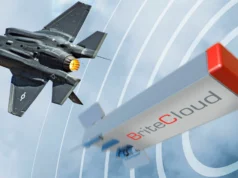
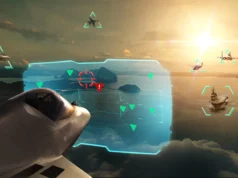
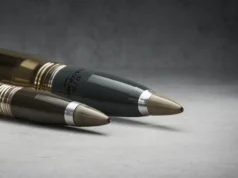
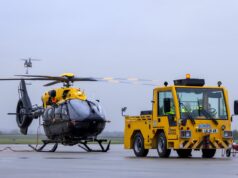

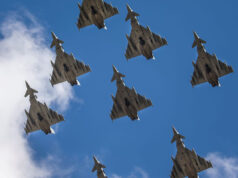


I always felt this should have been the backbone of the RN’s fighter fleet. If this had been the case, the QE Class could have catered for traps and a reinforced deck from the outset. Such a strategy would not have ruled out buying F35B’s but in fewer numbers, with F35A’s forming with the RAF. I’m still a bit nervous as to how effective the F35 will be and its lack of F18 load and range? The US can obviously afford to spread their options, where the likes of the UK needs to be far less universal. A QE Class loaded with F18’s is very much where we were with our F4 carriers in the 60’s/70’s and that was a formidable deterrent.
I’d had similar thoughts a while back. F/A-18 Super Hornet costs around £55million Sterling each, compared to £100million for F35b. Could have easily bought (or built here on licence) over 100 for the FAA for less than half the cost of 138 F35Bs. The RAF could then have had several squadrons of F35As to replace the Tornados on a like for like basis in terms of number, or even increased airframe numbers.
Had we gone down that route Maurice, I’d have said let’s not bother with F35B for the FAA, and any spare funds go to purchasing the C variant.
Alas, we’re here now and we have the B. Now that we have it im in favour of keeping them all as B unless by some miracle the Treasury allocated a few more billion to defence, and then I’d say let the RAF have few squadrons of F35As in addition to the 138 B variants.
I can see both sides. I would have loved the carriers to have CATS for flexibility. That way we could have potentially had some cheaper aircraft to support the F35s and would have made working with the US a lot easier. However the F35B gives a very high rate of operations that is not matched with CAT Launched aircraft.
There’s no way Boeing would have allowed F/A 18 to be built in UK. it is still a 4gen jet (albeit 4.9) and would not allow UK air power to leap ahead of its competitors and don’t forget that we may have not got our 15% workshare had we not committed early.
You say that but we licence-built Apache helicopters here in the UK and they were also Boeing products.
If we’d looked at this from the outset of the QE carrier project we could have put cats and traps in and then had a standard air complement of 12 F35 (either b or c) and then 12 F/A-18s.
For a war footing, those numbers just then get doubled, depending on who the enemy is – a peer enemy like Russia or China, more F35s. An enemy with either weak or no real air defences, more F18s.
That was a different era and they were built with a lot of indigenous kit which makes them more expensive
Oh but the F35b is expected to cost 5.2 million each not100 million. Still more expensive but more capable aircraft than an updates FA 18. Also we contribute a large proportion of the build. We probably couldn’t afford to run a carrier with cats and traps and definitely notbtwo
F35 has been in action with IAF and over the middle east with the US
Ment 52 million not 5.2 fingers
one look at the AMARG aircraft held for future reactivation shows 30 odd f18 along with over 400 f15’s and16’s held there, if we’d not screwed up with the CATOBAR on Q.E.THEY WOULD HAVE BEEN A FASTER CHEAPER BUY THAN THE untried overpriced f 35.
The F-18 A/B/C/D left at AMARG are shagged. They’ve had issues with fatigue and the USMC is resorting to scrounging spares from museum birds.
You literally couldn’t have come up with a worse idea…
Id have preferred a “proper” carrier with cats and traps, maybe with F-18’s/Rafales or something however that horse has bolted. I’m not a fan of having all the eggs in the F35 basket, but we are where we are….
What annoys me is the reckless policy of committing to one type of aircraft, that was still being developed, at the same time build huge carriers to accommodate them, without any backup strategy? Such a policy would never have been adopted back in the fifties, where a number of carrier aircraft were deployed. Sadly, some of which failed to meet FFA requirements and thanks to other options, the carriers were not compromised. We still don’t know if F35 will fulfill the RN’s requirements, and if it proves to fall below expectations, the RN could be reduced to support operations with cats and traps carriers? All we can hope is the current QE Class and their F35’s lives up to the ambitious goals, otherwise, their sale might be eventually back on the table? P.S. don’t forget Cameron’s decision to scrap the Harrier fleet, thereby compounding the risks with proceeding with F35!
give it ten years and we’ll probably retire the f 35 as well
MattW If there was ever any Intention to buy Rafales for the Carriers, I reckon BAE would have had a right paddy !
Dragging up really old ground here but i’d have much preferred a Sea Typhoon. ( as well as the F35 ).
The canards are in the wrong place.
I have always thought that we should develop tempest from the start with the intention of a carrier borne aircraft so then in the 2030s we can buy some f35cs and convert the carriers to catobar, perhaps build one or two small stock carriers similar to the Cavour to keep the f35bs going, now that would be a strike force!
One issue with that though is that having multiple variants would drive up the cost, much like F35B.
Another, more worrying issue would be that if all Tempests were carrier-capable, the MoD may decide to replace the 150-odd Typhoons and 138 F35s with 150 Tempests as our total fast jet force and share them between the RAF and FAA.
Would have meant increasing squadron numbers and an increase in personnel to man them if the FA18 was an all FAA asset and the RAF, who provide much of the carriers fast jet capability now, were removed from the equation.
Also others have often mentioned the issue of pilots being current for carrier landings with cats and traps.
Thirdly, operating a third fast jet type, where now we only operate two.
Having said all that, in an ideal world of lots of money, I would also have been happy with that route!
Let us not forget that Cats need (currently) an abundance of steam. The QE class carriers have no means of generating the levels of steam required in terms of power generation and nor do they have the room for the steam generators and other equipment required to fast cycle the Cats. The solution would have been nuclear, but there were enormous reasons why Integrated Electric Propulsion was chosen, not least availability and size of reactors, but also ability to visit any port. The class can go where nuclear powered vessels cannot due to government policy of a number of nations.
Clearly, the F35B was seen as the aircraft that ticked all of the boxes, but then to be good at lots of things means you are the master of none. We shall see.
The CATS on the Carriers would have been electric not steam.
Hence the (currently) in brackets. The EMALS was not proven and was proving problematic hence the design reversion back to STOVL aircraft. Even today only the USS Gerald R. Ford has EMALS and this is still under testing and dev.
works well for take off but problems around emal are in in the arresting systems.
Arrestors are mechanical not steam; they use oil rams.
There is space in the QEC for cats and trap of thr emal type as the power plant was designed to support them .
The decision to go with the F35B was solely treasury based on cost , the navy wanted the F35C and the RAF wanted the A version and they are 95% the same where as the F35B is only suitable for the USMC who wanted a plane they could keep close to the front.
3 types of fast jet wasn’t a problem before.
10 years ago we had Typhoon, Tornado GR1 and Harrier GR9.
15 years ago we had Typhoon, Tornado GR1, Harrier GR9, Sea Harrier FA2, and Jaguar.
I know that aircraft are more expensive now and also Typhoon far outmatches it’s predecessors even in much smaller numbers, but I feel we’re losing capability by reducing down to two aircraft types, especially as we have barely a dozen of one of them and won’t be up to full strength for 10 years with it.
Will this then go further? Will, in 20-30 years time, they decide not to build a new plane to replace F35 and instead try to navalise a handful of Tempests, trying to shoehorn it into a role it wasn’t intended for and costing billions, reducing the number of total combat planes to 4 frontline squadrons shared between FAA and RAF?
whatever aircraft is designed and accepted as viable for the carriers, it will need to have a STOVL version, i see the u.s has tested an f 22 ‘jump jet(google f22 raptor jump jet,and see video).unfortunately the u.s congress pass a motion that the raptor would not be put forward as an export design and build
f 18 is the best looking aircraft since the f 15 the f35 is the ugly sister.
Did you just assume its gender….the weak spine libtard lefties will come hunt you down!
it is fugly as sin though!
I’m clearly in the minority here then, as I actually quite like the look of the F35.
Slightly off topic, but I was reading recently about short take off/ landing fixed wings. As one example, a Twin Otter needs 500m and has a stall speed of around 60 knots. Give it a guaranteed 30 knot headwind down the runway and a ramp at the end, I wonder if it or something like it could operate from the carriers?
Very much cheaper and more reliable than Ospreys, longer range, higher ceiling (AEW) than Merlin.
I saw this some time ago. Shows what can be done if your balls are big enough. Looks like a stall landing, which is clever and then human braced assisted take off.
Be good if the link had embedded!!
https://www.youtube.com/watch?v=pUdzVnZBaoY
how about a VSTOL sopwith camel?
couldn’t carry bombs
I’ve just read an article stating that the QE design is being offered to India by BAE, hence the visit a few weeks back. It’s being pushed as easily adaptable to cats n traps.
What I don’t get is that we chose to save money on the carrier design with the omission of cats and traps, around a billion if I recall, but then have to spend an extra £30 million or so per aircraft and get lower performance in many areas. That’s around £4 billion extra over the 138 airframes!
Because the MoD and Treasury accountants only look as far ahead as the end of this tax year.
There is not as large a price gap between the F35B and C as there is with the A model. Also if the UK government only order 48 air frames it makes that £1-2 billions conversion work much more expensive upfront. It never should have been that expensive to convert the carriers but EMALS has caused the US a lof of headaches that they are still working through so i think F35B was the only way to go.
Remember the F-35B has the major UK design contribution to the F-35 program – the lift fan – along with the VTOL expertise gleaned from the Harrier. The decision to go with the F-35B was backing British technology.
i’ve always been angered that consideration for another updated design of the harrier wasn’t pursued,or for that matter a typhoon version.
I’m still very much bemused by the statement that STOVL operations can generate more sorties than CATOBAR. At present I believe our F35Bs will use the full length of the available deck to take-off, which allows them to carry the most weight. To land they can either do short rolling landings or vertical depending on their return weight. The design of the deck does not allow these operations to be done concurrently. Therefore, each operation must be done with an interval which lengthens the time required. So it probably takes the same amount of time as traditional CATOBAR carriers to launch and recover, as I don’t believe for safety reasons that they launch aircraft from their forward cats as well as land aircraft on the angled deck – I could be wrong though.
CATOBAR carriers will launch and recover at the same time in an emergency. For example a panic call for immediate continuous air support as happened in Vietnam when LZs were in danger of being overrun.
You are right. We’re doing great with the money available and I doubt anyone else could do the same.
I worry it will be a slippery slope however, that we will go from 2 aircraft types to in Tempest, and that the total numbers will be fewer than F35 alone, let alone the Typhoons they are meant to replace.
Yes, highly expensive manned aircraft numbers will go down, but drone numbers will hugely increase in the years to come. Each fighter drone will only cost a couple of million each plus weapons/electronic warfare, allowing the purchase of hundreds. Unmanned will mean a big increase in numbers in many areas across the armed forces, including ships too. Taking out the human requirements saves a lot of money and size.
That’s not what is happening at the moment though; we’re getting 20 Protector drones at a push, which can be used for close air support but what is happening with Taranis? Nothing much seems to come out of that.
My concern is that HMG will say the same thing about drones; we’ll get larger numbers of them etc, and then end up replacing low numbers of expensive manned jets with even lower numbers of inexpensive drones to save money or cutbacks.
Treasury don’t see capability, just cost.
VSTOL reaper? anyone or maybe a recoverable taranis
we’ll only have one, the other, instead of being in operation, will be stuffed in dry dock, having its nuts and bolts tightened
That’s the point of having 2 carriers; one in action and one under maintenance means we have year-round availability as one will always be ready to go.
Better than the French, who only have one carrier which means they ok can only use it half the time. They need to hope they don’t go to war while it’s in refit or maintenance!
I like the way they increase the airframe life to 10k hours. That is high for a fast jet. I believe Tornados were withdrawn on 8k. Do any experts know what is ‘typical’ and what the Tornado survivors were stood down with last month?
I won’t comment on the Tornado’s actual airframe hours, but suffice to say they are very high, due to their constant use, much higher than Saudi, German or Italian aircraft. As an aircraft gets within a certain point of its max fatigue life, g-limits are imposed on the airframe, which are checked after each sortie. This is to prolong the airframe’s life during peacetime. If the aircraft is required for conflict the restrictions are lifted. The manufacturer will set the max fatigue life at the start of the contract. The airframe’s life limit can go up or down depending on how the aircraft is used. It can also be extended through reconditioning where structurally significant items (main spars etc) are replaced, like they did with the Herc’s.
A modern example of fatigue life limiting is with the Typhoons operating in the Falkands. They have a shortened maintenance period as they are in constant use unlike the UK ones. They also get proper thrashed, as there’s no flight restrictions except flying low over penguin and seal colonies. Its one of the few places where they are allowed to go supersonic over land.
Works out at just over 50 million dollars a head. Sounds like good value!
That’s to the U.S. they quoted Canada 3 times that.
I wasn’t moaning as such, just wondered why the deck has been painted/designed as a through deck rather than angled for landing. I guess it gives a greater margin for error being a through deck to stop the brakes from over-heating on rolling landings compared to an angled deck. Does make you think, what would happen if an aircraft suffered a brake failure (no crash barrier)?
I am not sure what the hype is about with cats & traps. The system we have gives us 5 gen planes rather then 4 gen. the ramp and rolling landing makes the most of the F35B. A F35 armed with Meteor would kill an F18 at range before the F18 knew it was there. I think we should embrace the new and stop hankering after the old…
I think QE with F35 will do us just fine.
Rob N
Ron I tend to agree.
F35b with Meteor plus a T45 guard ship will pack a very powerful punch. You can’t let perfection be the enemy of very very good.
I also like the opportunities it opens up for cross decking – Japan Italy maybe Spain maybe Australia. We could see the RN becoming the essential hub of powerful coalitions
Yes the Japanese will operate F35B and we are building good links out there. Australia has a helicopter ship with a ramp but no F35Bs yet. I would like to see them build that capability. I think the visit of QE to the area will do a lot to promote non-cats n traps platforms. I am surprised the USMC do not fit ski jumps to their platforms perhaps the USN does not wish to admit there is an alternative to cats n traps! Perhaps the USMC who fly off QE will lobby to have ski jumps on their ships.
Rob N
P.S. F18 is NOT in my view a 4.9 gen plane. It is not stealthy enough, it cannot super cruise, the basic design is dated – remember the YF17. The UK Typhoon is better especially when it gets it new radar.
CATOBAR would’ve been great in an ideal world, but a nuclear powerplant to generate steam would’ve been prohibitively expensive and EMALS is still suffering from troubled development. Given that the QE class was originally slated to enter service in 2012, choosing EMALS would have been a disaster.
STOVL was the safe option, and there’s no way we could afford multiple fast jets for the navy, and there’s no point. We used to operate a mix of fast jet aircraft because of the technological limitations of the time. Having one type is much better as it maximises airframes for every type of mission, keeps the logistical support lean, and streamlines training.
The F35B’s reduced range and payload compared to the F35C isn’t really an issue (when was the last type a Tornado or Typhoon dumped a full load on a mission?) it is more than capable of what the navy requires.
If there is a limitation to the STOVL carriers, it’s their inability to operate the support aircraft – AEW, ISTAR, EW – which are the force multipliers. But it will be interesting to see the development of next generation UAVs that may occupy these roles in the future for the RN.
F35? We bought the ticket, now we’re taking the ride! But we’re cannily paying for the ticket in installments, which is great. We get aircraft at the lowest price possible, and at a time when the tech is mature.
Buying Super Hornet would be a complete waste of money. In any international fighter procurement competition that is the black sheep. Typhoon, Rafale and Gripen E/F are all ahead of it. The USN is buying Super Hornets because they need numbers, whereas the RN with just two carriers doesn’t need so many airframes, and therefore it’s beneficial to have only one airframe. If F35C unit prices came down, i’m sure the USN would wind up F/A18 production and consolidate their fast jet fleet on Lightning II.